Understanding which insects lay eggs on leaves is crucial for both garden enthusiasts and professional horticulturists.
This knowledge aids in early detection of potential pests, allowing for timely intervention and ensuring plant health.
Several insects choose leaves as the ideal location to lay their eggs, and each has its unique reasons and characteristics.
This article provides an in-depth look at some of the most common insects that lay eggs on leaves and delves into the reasons behind this behavior.
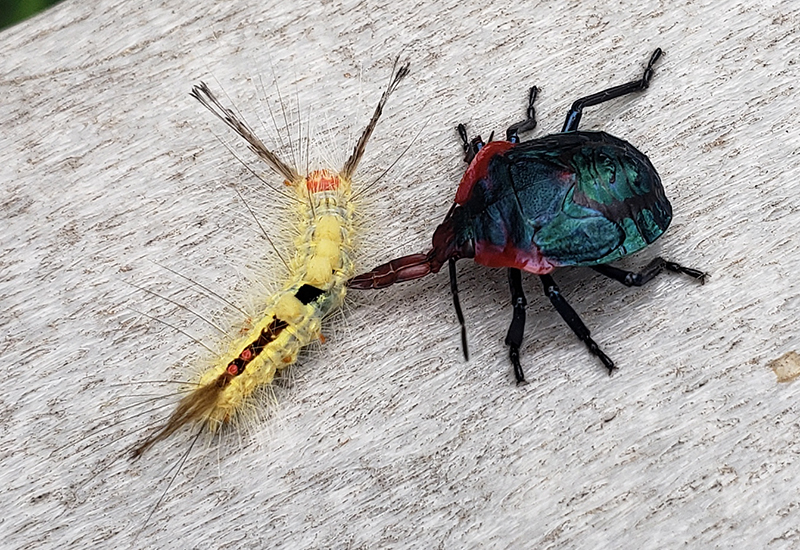
Why Do Insects Lay Eggs on Leaves?
There are three main reasons why leaves are one of the most important habitats for insect eggs.
Protection from Predators
Leaves, especially the undersides, offer a discreet and shielded environment, protecting the fragile eggs from potential predators.
This concealed location makes it challenging for predators to spot and access the eggs, ensuring a higher survival rate for the next generation of insects.
Providing a Food Source for the Larvae When Hatched
Laying eggs on leaves ensures that once the larvae hatch, they have immediate access to a food source.
Many insect larvae feed on the very leaves they were born on, deriving essential nutrients necessary for their growth and development.
This strategy eliminates the need for the young insects to travel in search of food, reducing their vulnerability to predators.
Proximity to Their Primary Food Source
For many adult insects, plants serve as their primary food source. By laying their eggs on leaves, they ensure that their offspring are born right where the food is.
This proximity to food not only benefits the larvae but also allows the adult insects to stay close, enabling them to protect their eggs and newly hatched larvae from potential threats.
In conclusion, the behavior of insects laying eggs on leaves is a strategic decision driven by the need to protect their offspring and provide them with the best possible start in life.
In the next few sections, we will cover some of the most important insects who lay their eggs on leaves.

What Insects Lay Eggs on Leaves? 6 Insect Types
Leafminers
Description and Lifecycle
Leafminers are not a single species of insect but rather a term used to describe the larvae of various insects, including certain moths, flies, and beetles, that live inside and feed on the tissue of leaves.
Typically, adult leafminers lay their eggs on the surface of leaves.
Once these eggs hatch, the larvae burrow into the leaf and create winding tunnels or “mines” as they consume the inner tissue.
These mines are often visible as white or translucent trails on the leaf surface. As the larvae mature, they continue to feed, often enlarging their mines.
Once fully grown, they exit the leaf to pupate in the soil below, eventually emerging as adults to restart the cycle.
Damage Caused to Plants
The primary damage caused by leafminers is the mines or tunnels they create as they feed on the leaf tissue.
These mines can hinder the plant’s ability to photosynthesize effectively, leading to reduced vigor and growth.
While a small number of leafminers might not cause significant harm, a large infestation can lead to severe leaf damage, causing them to turn brown and fall off prematurely.
In some cases, this can reduce crop yields, especially in vegetable gardens where leafy greens are grown.
The damage also makes plants more susceptible to diseases, as the mines provide entry points for pathogens.
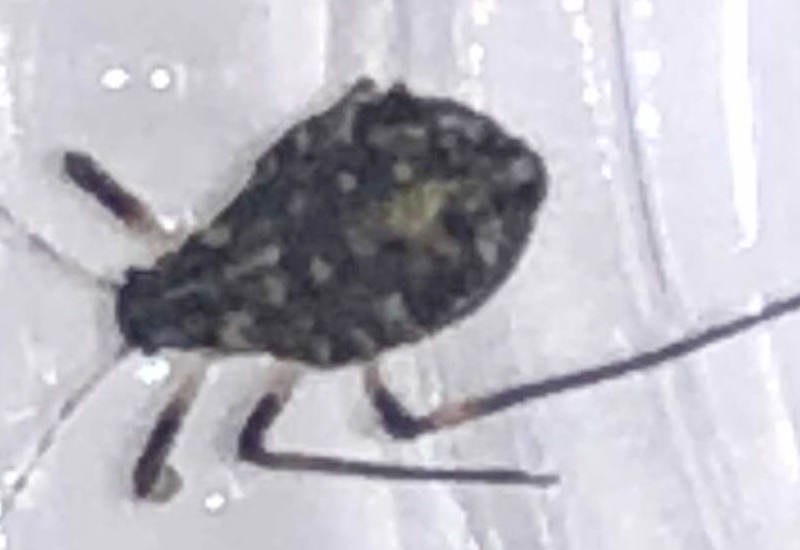
Control Measures
Effective control of leafminers involves a combination of cultural, biological, and chemical methods.
- Cultural Control: Regularly inspect plants for signs of leafminer activity and remove affected leaves to reduce the population. Ensure proper spacing between plants to reduce humidity and make the environment less conducive for leafminer development.
- Biological Control: Several beneficial insects, such as parasitic wasps, feed on leafminer larvae. Introducing or encouraging these natural predators can help keep leafminer populations in check.
- Chemical Control: If infestations are severe, insecticides can be used. However, it’s essential to choose products that specifically target leafminers and are safe for beneficial insects. Insecticidal soaps and neem oil are less toxic options that can be effective against leafminers.
Moths
Moths are diverse insects with thousands of species, each having its unique characteristics and behaviors.
Several moth species are known to lay yellow eggs on plants, causing concern for gardeners and farmers due to the potential damage their larvae can inflict.
Different Moth Species That Lay Yellow Eggs
Cabbage Looper (Trichoplusia ni): This moth species is known for its caterpillars that “loop” as they move. The adult moths lay yellow eggs, primarily on plants within the Brassicaceae family, such as cabbage, broccoli, and kale.
Corn Earworm (Helicoverpa zea): Also known as the tomato fruitworm or cotton bollworm, this moth lays yellow eggs on a variety of plants, including corn, tomatoes, and cotton. The larvae are particularly notorious for burrowing into corn ears and tomato fruits.
Fall Armyworm (Spodoptera frugiperda): This species is a significant pest in many agricultural systems. The moths lay their yellow eggs in clusters, often covered with a layer of protective scales.
Gypsy Moth (Lymantria dispar): An invasive species in North America, the gypsy moth lays its eggs in large masses that are often yellow when first laid but turn tan or buff-colored as they age.
Preferred Locations on the Plant for Laying Eggs
- Leaf Surfaces: Many moth species prefer the undersides of leaves for egg-laying, as it offers protection from predators and environmental elements. The cabbage looper and corn earworm, for instance, often lay their eggs on the undersides of leaves.
- Stems and Twigs: Some moths, like the gypsy moth, lay their eggs on the stems or twigs of plants, often in sheltered locations or crevices.
- Fruits: Moths like the corn earworm might lay their eggs directly on the fruit, ensuring that the hatching larvae have immediate access to a food source.
- Plant Base: Some species prefer the base of the plant, especially if there’s a dense canopy, as it provides a humid and protected environment.
Understanding the specific behaviors of each species is crucial for effective monitoring and control.
Recognizing the species by their egg color, shape, and preferred laying locations can aid in early detection and intervention.
Beetles
Beetles are among the most diverse groups of insects, with over 350,000 species described worldwide.
Several beetle species lay their eggs on or near plants, and their larvae, commonly known as grubs, can have significant impacts on plant health.
Beetles That Lay Eggs on Leaves
Colorado Potato Beetle (Leptinotarsa decemlineata): Recognizable by its yellow and black striped elytra (wing covers), this beetle is a significant pest of potato plants. Females lay clusters of bright orange-yellow eggs on the undersides of leaves.
Flea Beetles (Alticinae subfamily): These small, shiny beetles get their name from their ability to jump like fleas. They lay tiny eggs at the base of host plants or in the soil.
Japanese Beetle (Popillia japonica): This invasive species has a metallic green body with copper-brown wing covers. They lay their eggs in the soil, but adults are known to feed on the leaves of over 300 plant species.
Asparagus Beetle (Crioceris asparagi): As the name suggests, this beetle targets asparagus plants. They have a bluish-black body with creamy yellow spots and lay their dark eggs on asparagus spears and ferns.
Lily Leaf Beetle (Lilioceris lilii): This bright red beetle is a pest of lilies. Females lay rows of orange eggs on the undersides of lily leaves.

Impact on Plants
Leaf Damage: Adult beetles, such as the Colorado potato beetle and Japanese beetle, chew on leaves, often leaving a characteristic skeletonized pattern.
This damage can reduce the plant’s ability to photosynthesize, leading to weakened plants.
Root Damage: The larvae of many beetles, especially the Japanese beetle and Colorado potato beetle, feed on plant roots.
This can stunt plant growth, reduce yields, and in severe cases, kill the plant.
Stem and Fruit Damage: Some beetles, like the asparagus beetle, target the stems and fruits of plants.
Their feeding can scar fruits, making them unmarketable, and weaken stems, leading to reduced plant vigor.
Disease Transmission: Beetles can act as vectors, transmitting various plant diseases. Their feeding creates open wounds on plants, making them more susceptible to infections.
Aphids
Aphids, often referred to as plant lice, are tiny, soft-bodied insects that are among the most common pests affecting plants.
They come in various colors, including green, black, brown, and pink, and there are over 4,000 species of aphids described worldwide.
How They Attack Plants
Aphids have specialized mouthparts called stylets, which they use to pierce plant tissues and suck out the sap.
This sap is rich in sugars, and as aphids feed, they excrete a sticky substance known as honeydew.
This honeydew can attract other pests like ants and can also lead to the growth of sooty mold.
Aphids are vectors for numerous plant viruses. As they feed from one plant to another, they can transfer these viruses, leading to various diseases.
Some aphid species induce the formation of galls on plants. These galls are abnormal growths that provide the aphids with shelter and food.

Where They Lay Their Eggs
nterestingly, many aphid species reproduce asexually for most of the year, giving birth to live young (known as nymphs) without laying eggs.
However, in response to environmental cues, such as decreasing day length and cooler temperatures, aphids will produce a generation that lays eggs.
These eggs are typically laid on the host plant and are often found in crevices, at the base of buds, or on the undersides of leaves.
The eggs overwinter and hatch in the spring, giving rise to a new generation of aphids.
Notable Aphid Species That Lay Eggs
- Green Peach Aphid (Myzus persicae): A widespread pest that affects various plants, including peach, nectarine, and many vegetables.
- Black Bean Aphid (Aphis fabae): Recognizable by its dark color, this aphid primarily targets beans and other legumes.
- Rose Aphid (Macrosiphum rosae): As the name suggests, this aphid is a common pest of roses.
- Cotton Aphid (Aphis gossypii): This species affects cotton and various other plants, including melons and cucumbers.
- Potato Aphid (Macrosiphum euphorbiae): A pest of potatoes, tomatoes, and roses, this aphid is larger than many other species and can be pink or green.
Stink Bugs
Stink bugs are not particularly picky and can lay eggs on a wide variety of plants.
Some of their preferred plants include fruits like peaches, apples, and citrus, as well as vegetables like beans, corn, and tomatoes.
They often lay their eggs in clusters on the undersides of leaves.
Stink Bugs That Lay Eggs on Leaves
- Brown Marmorated Stink Bug (Halyomorpha halys): An invasive species in North America, this stink bug has become a significant agricultural pest. It lays its eggs in clusters on the undersides of leaves.
- Green Stink Bug (Chinavia hilaris): This bright green bug is commonly found in gardens and agricultural fields. It lays barrel-shaped eggs in tight clusters on leaves.
- Southern Green Stink Bug (Nezara viridula): Recognizable by its vibrant green color, this stink bug lays its eggs in clusters, often on the undersides of leaves.
- Two-Spotted Stink Bug (Perillus bioculatus): This stink bug is a predator of the Colorado potato beetle and lays its eggs on various plants, including potatoes.

Squash Bugs
Squash bugs are notorious pests for gardeners and farmers who cultivate squash and other cucurbits.
They belong to the family Coreidae and are often mistaken for stink bugs due to their similar appearance.
Identification and Lifecycle
Squash bugs are typically brown or grayish-brown with a flat, elongated body. They have a shield-like shape, but it’s more elongated compared to stink bugs.
The eggs of squash bugs are oval and bronze or reddish-brown in color. They are often laid in clusters, usually on the undersides of leaves, especially near the leaf veins.
After hatching, the nymphs are greenish-gray and go through several instar stages, becoming darker as they mature.
Fully grown squash bugs are about 0.5 to 0.75 inches long with fully developed wings.
Squash Bugs That Lay Eggs on Leaves
- Anasa tristis: The most common squash bug species in North America. It primarily targets squash and pumpkins but can also affect other cucurbits.
- Anasa armigera: Another species that is less common but can still cause damage to squash plants.
Damage Caused to Plants
Squash bugs use their piercing-sucking mouthparts to feed on plant sap.
Their feeding can cause yellow spots that eventually turn brown. As they continue to feed, the leaves may wilt, blacken, and die.
Squash bugs can also transmit the cucurbit yellow vine disease, which causes plants to wilt and die.

Management and Control Measures
- Physical Removal: Regularly inspect plants and manually remove any visible squash bugs, nymphs, or egg clusters. This is especially effective in the early stages of infestation.
- Trap Boards: Placing wooden boards or shingles in the garden can serve as a trap. Squash bugs will gather under these boards at night, making it easier to collect and dispose of them in the morning.
- Natural Predators: Encourage the presence of natural predators like spiders, ladybugs, and tachinid flies that feed on squash bugs.
- Insecticides: If the infestation is severe, consider using insecticides. However, squash bugs can develop resistance, so it’s essential to rotate products and use them as a last resort.
Identification of Insect Eggs
The presence of insect eggs on plants is often the first sign of a potential pest infestation.
Proper identification of these eggs can provide valuable insights into the type of insect threat a plant faces, allowing for timely and effective intervention.
Common Colors of Insect Eggs on Leaves
- Yellow Eggs on Leaves: Eggs of this color are often laid by moths, such as the cabbage looper and corn earworm. Yellow eggs can also indicate aphids or certain species of beetles.
- Black Eggs on Leaves: Black or dark-colored eggs can be indicative of certain fly species or beetles. The color often provides camouflage against predators.
- White Eggs on Leaves: Many insects lay white eggs, including some species of moths, beetles, and flies. White eggs can sometimes be harder to spot on plants, especially on lighter-colored leaves.
Size, Shape, and Clustering Patterns:
- Size: Insect eggs can vary in size, from the tiny eggs of aphids to the larger eggs of some beetles and moths. Observing the size can give clues about the insect type.
- Shape: The shape of the eggs can also be indicative. For instance, some are perfectly round, while others might be oval or barrel-shaped.
- Clustering Patterns: How the eggs are laid can provide significant identification clues. Some insects lay their eggs in tight clusters, while others might scatter them across a leaf. The location on the plant (underside of leaves, stems, fruit) can also be a distinguishing factor.
Importance of Proper Identification
Different insects require different control measures.
By accurately identifying the insect eggs, one can apply the most effective treatment method, saving time, effort, and resources.
Moreover, misidentification can lead to the use of unnecessary or even harmful treatments that might affect the plant’s health or beneficial insects present in the environment.
Lastly, some insects cause more harm than others.
Knowing which insect is about to hatch can help gauge the potential threat level and decide on the urgency of intervention.
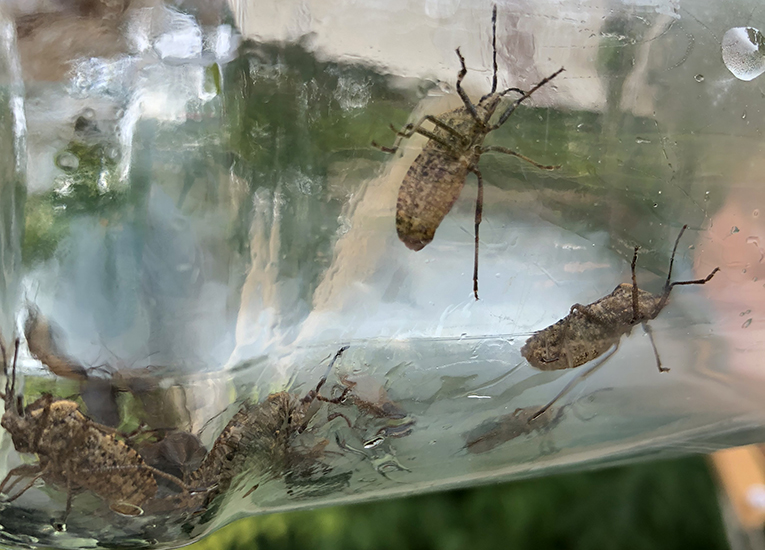
Impact of Insect Eggs on Plants
Insect eggs on plants might seem harmless at first glance, but they are harbingers of potential damage that the hatching larvae or adults can inflict.
The presence of these eggs can have several impacts on plants:
Damage to Plant Health and Growth
As larvae hatch from the eggs, they often feed on the plant’s leaves, stems, or fruits.
This feeding can lead to reduced nutrient uptake, stunted growth, and overall weakened health of the plant.
In some cases, the feeding sites can become entry points for pathogens, leading to infections or diseases.
Impact on Photosynthetic Activity
Leaves are the primary sites for photosynthesis, the process by which plants produce energy.
Damage to the leaves by hatching insects can reduce the plant’s photosynthetic capacity.
Reduced photosynthesis means the plant might not produce enough energy to support its growth and reproduction, leading to reduced yields, especially in fruiting plants.
Potential for Plant Death
In severe infestations, where a large number of eggs hatch and the larvae feed voraciously, plants can experience significant stress.
Combined with other factors like diseases, nutrient deficiency, or additional pest pressures, this can lead to the death of the plant.
Management and Control
Effectively managing and controlling insects that lay eggs on plants requires a multi-faceted approach:
Cultural Practices to Prevent Egg Laying
- Regularly inspect plants for signs of insect activity and remove any detected eggs.
- Ensure proper spacing between plants to reduce humidity and make the environment less conducive for insect reproduction.
- Use row covers or netting to physically prevent insects from accessing plants and laying eggs.

Natural Predators and Biological Control
- Many insects have natural predators that can help keep their populations in check. Ladybugs, lacewings, and parasitic wasps are examples of beneficial insects that can feed on harmful pests.
- Introducing or encouraging these natural predators in the garden can be an effective way to manage pest populations.
Chemical Control and Recommended Insecticides
- If infestations are severe, insecticides can be used. However, it’s essential to choose products that are specific to the target insect and safe for beneficial insects.
- Insecticidal soaps, neem oil, and pyrethrin-based insecticides are less toxic options that can be effective against many pests.
Importance of Early Detection and Intervention:
- The sooner insect eggs are detected and addressed, the easier and more effective the control measures will be.
- Regular monitoring and early intervention can prevent small infestations from becoming large, unmanageable problems.
Frequently Asked Questions
Do leaf insects lay eggs?
Yes, leaf insects, also known as phasmids or stick insects, do lay eggs.
They are known for their remarkable camouflage, resembling leaves to evade predators. Female leaf insects drop their eggs onto the forest floor, where they resemble seeds.
These eggs eventually hatch into nymphs that look like miniature versions of the adults.
What insects lay red eggs or white eggs on leaves?
Several insects lay red or white eggs on leaves. For instance:
- Red Eggs: Some species of stink bugs and shield bugs lay red or reddish-brown eggs. The lily leaf beetle is another insect known to lay bright red eggs on the undersides of lily leaves.
- White Eggs: Many insects lay white eggs. This includes certain species of moths, beetles, and flies. For example, the cabbage white butterfly lays white eggs on plants in the Brassicaceae family.
Which insects target specific plants, like tomatoes?
Tomatoes are a favorite of several insects, both for feeding and for laying eggs. Some of the most common insects targeting tomatoes include:
- Tomato Hornworm: A caterpillar that later turns into a moth, this pest feeds voraciously on tomato leaves and can cause significant defoliation.
- Aphids: These tiny pests suck sap from tomato plants, weakening them and potentially transmitting diseases.
- Whiteflies: Similar to aphids in their feeding habits, whiteflies can cause yellowing of tomato leaves.
- Stink Bugs and Shield Bugs: These insects pierce tomato fruits and suck out the juices, leading to discolored, distorted fruits.
- Flea Beetles: These small beetles chew tiny holes in tomato leaves, giving them a characteristic “shot hole” appearance.
Conclusion
The presence of insect eggs on plants serves as an early warning sign of potential pest infestations.
Regular monitoring and timely identification of these eggs are crucial steps in maintaining the health and vitality of plants.
By understanding the habits, life cycles, and preferences of various insects, gardeners and farmers can make informed decisions about pest management.
While chemical interventions can sometimes be necessary, it’s essential to prioritize natural and sustainable control measures.
Encouraging the presence of beneficial insects, adopting cultural practices that deter pests, and using eco-friendly insecticides can all play a role in effective pest management.
Not only do these methods protect our plants, but they also ensure the well-being of the broader ecosystem.
Reader Emails
Over the years, our website, whatsthatbug.com has received hundreds of letters and some interesting images asking us about these insects. Scroll down to have a look at some of them.
Letter 1 – Unknown empty shell

Location: Hawthorne, CA
May 29, 2014 2:44 pm
Hi Daniel,
I found this egg sac on the bud of a Pincushion Bloom yesterday. I wish I knew what creature emerged from it, but have been unable to identify. I tried Vanessa Annabella, Gulf Fritillary, Gray Hairstreak and Cabbage Butterfly. None of them seem to match what we have. Can you help?
Signature: Thanks, Anna Carreon

Dear Anna,
Because of the silken anchor lines, we do not believe this is an egg, but possibly a pupal shell. We are pretty certain it is not a butterfly egg. How large was it? It seems too large for an insect egg, but we are not certain of the scale as we are not familiar with the pincushion bloom. Sadly, only two cosmos plants sprouted in the garden, and since we are dealing with a gopher this year for the first time, we hope they make it to maturity and reseed.

Dear Daniel,
I’m so sorry to have not responded before now. This was just a little less than 1/8″ in diameter and the pincushion bloom bud was just a little under 1″ in diameter. I am also inclined to say that it was a pupal shell as I looked at more photos of it and found some detritus inside.
We are sorry to hear that only two cosmos plants sprouted in your garden. Ours are just now returning, maybe you will have more as time goes on. How’s that darn gopher?
Anna
It ate the onions.
Letter 2 – Decorative Blue things mistaken for insect eggs

Location: Montréal (canada)
December 12, 2016 8:34 pm
Hi
We found these near the heater in the bathroom..saw 5or 6 of them and cleaned them up then a few days later saw 2 more
Looks like they have a tail and are very blue
Is something hatching eggs and should i call an exterminator? I have 2 young kids who are a bit freaked out and so am I ! What are they???
Thank you
Signature: Rita

Dear Rita,
We are relatively confident that these blue things are decorative and man-made, and NOT insect eggs. Did you recently pull out some holiday decorations? Perhaps these things fell off. Since we will be away from the office during the holidays, we are postdating your submission to go live at the end of the month.
The post What Insects Lay Eggs on Leaves? 6 Types of Leaf Egg Layers appeared first on What's That Bug?.


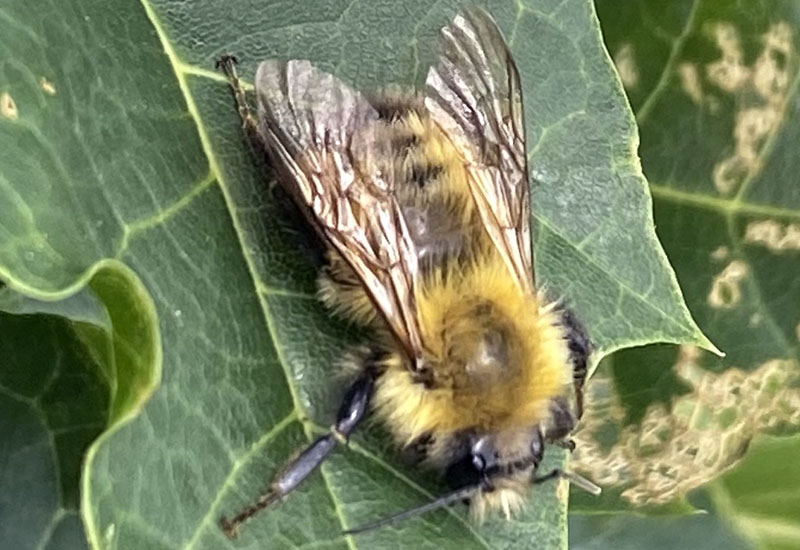










 Subject: Bioluminescence in Pilbara, Western Australia
Subject: Bioluminescence in Pilbara, Western Australia
 Subject: Mysterious bright green glow–bugs?
Subject: Mysterious bright green glow–bugs?
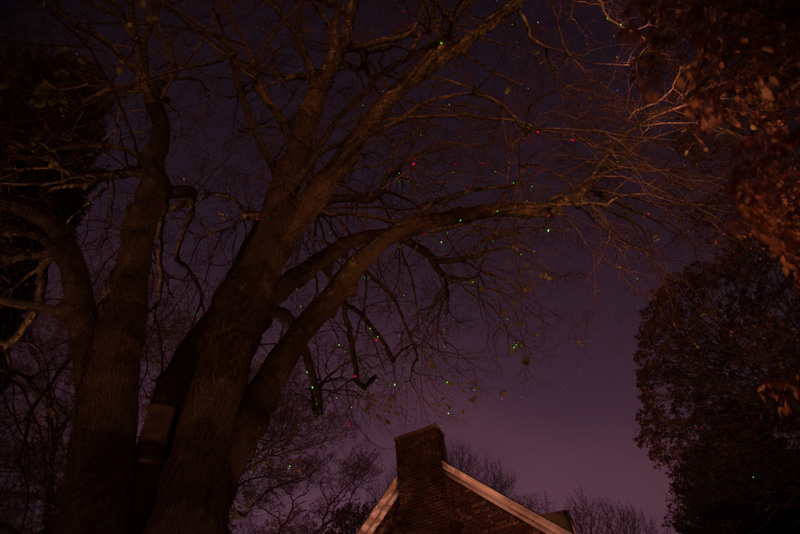 Subject: Glowing objects in tree
Subject: Glowing objects in tree